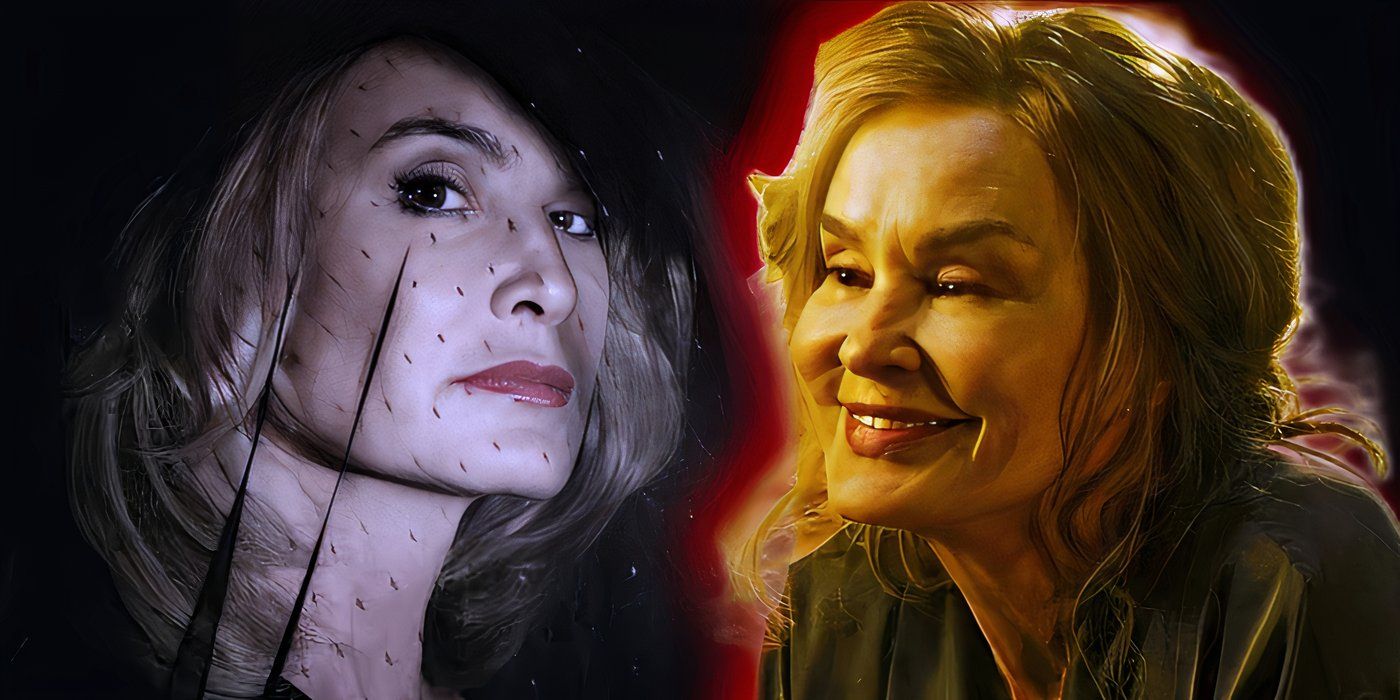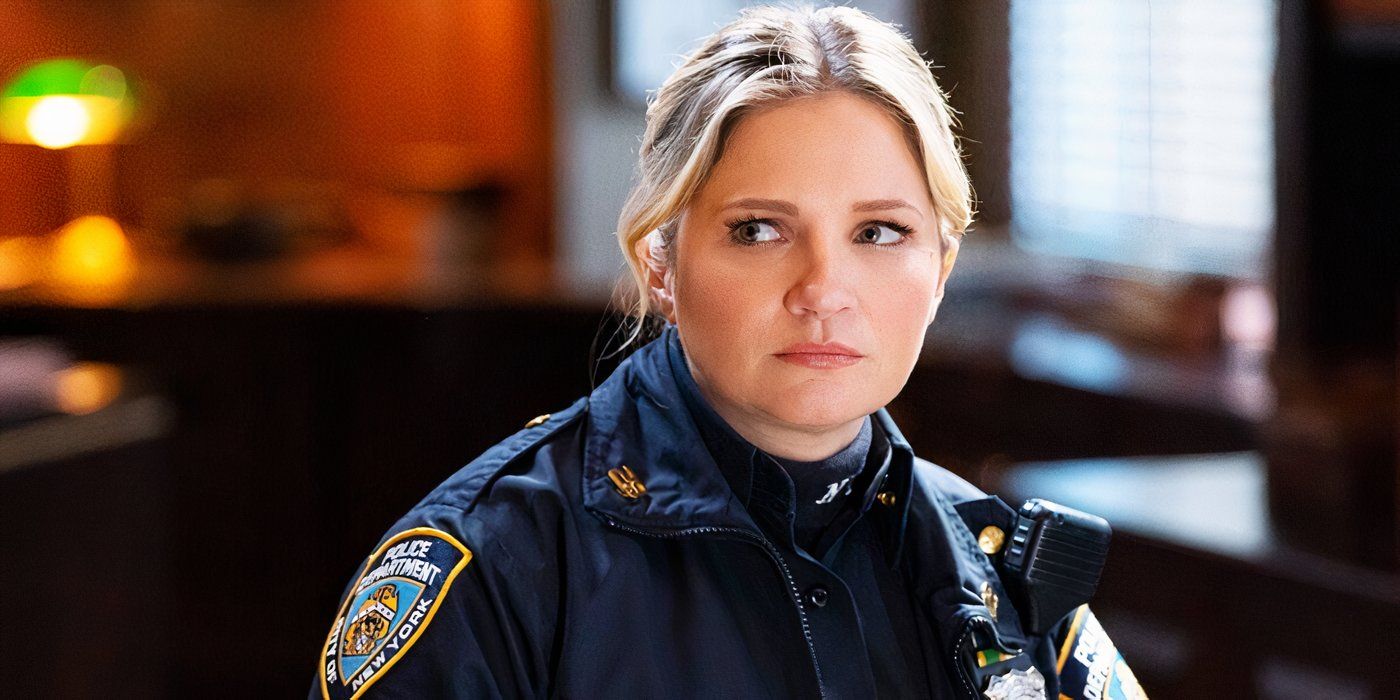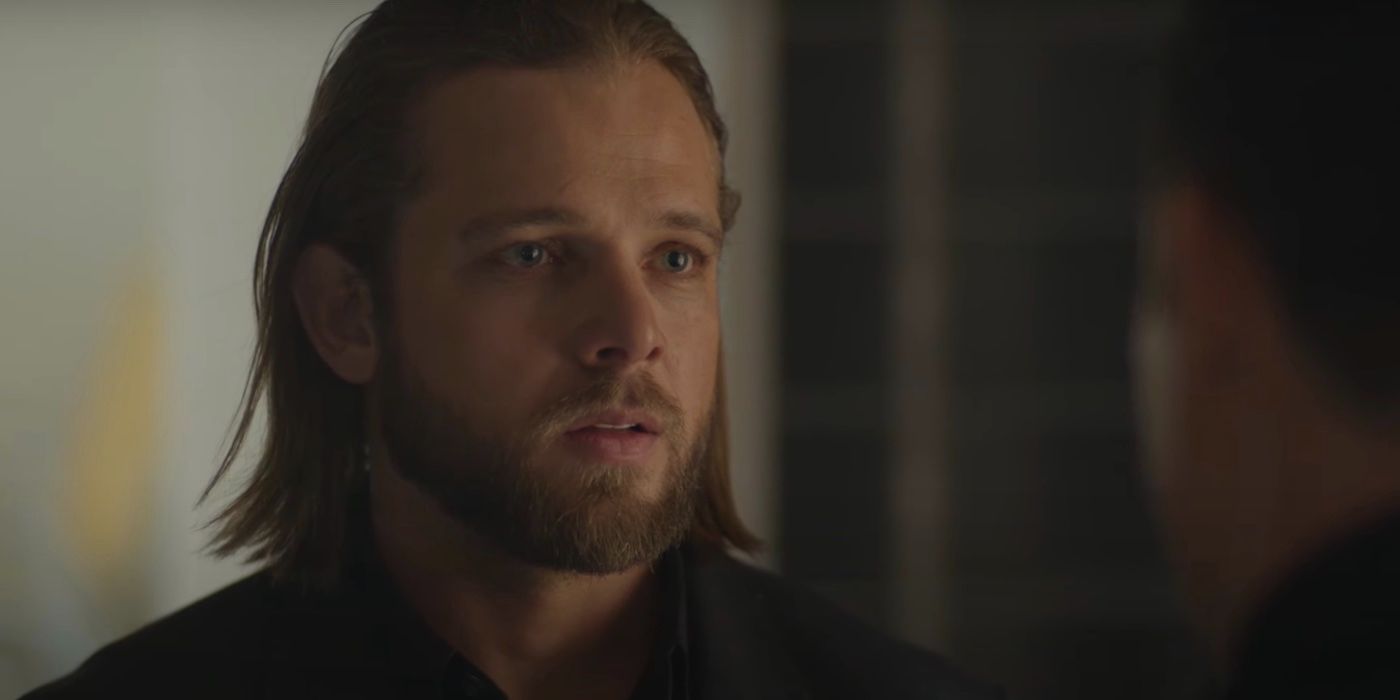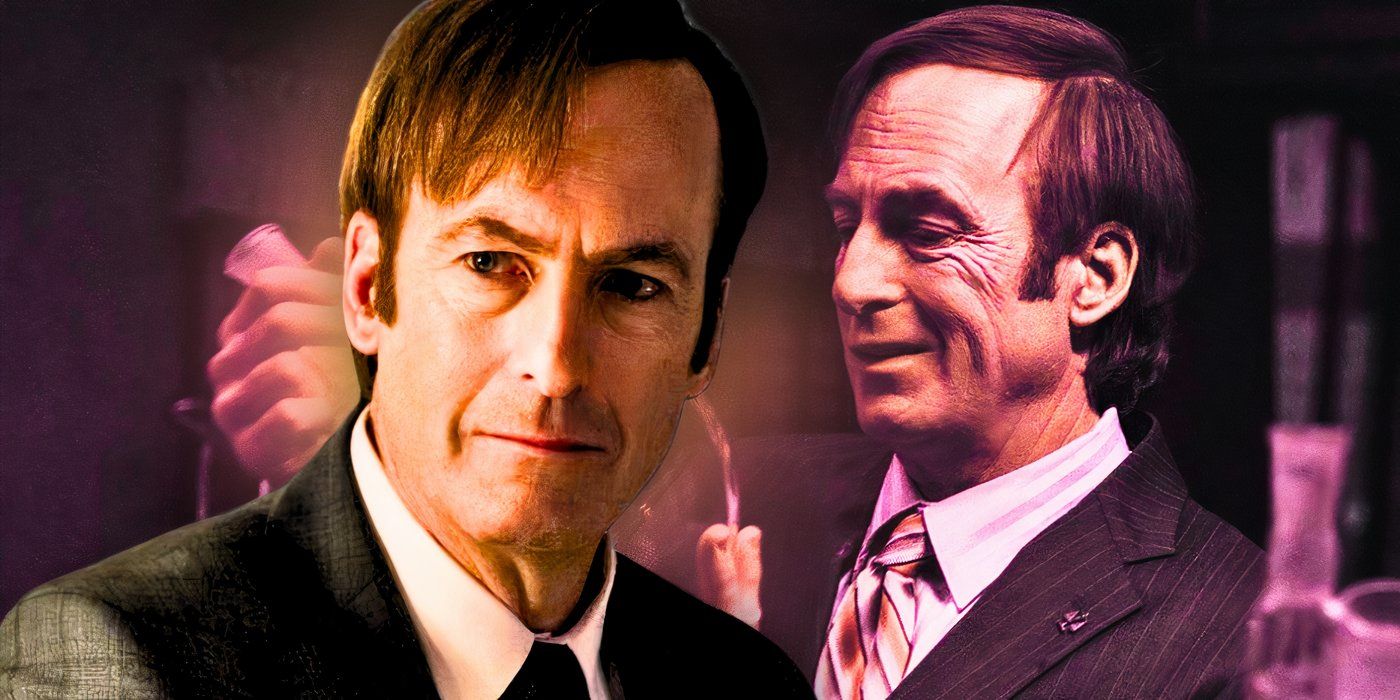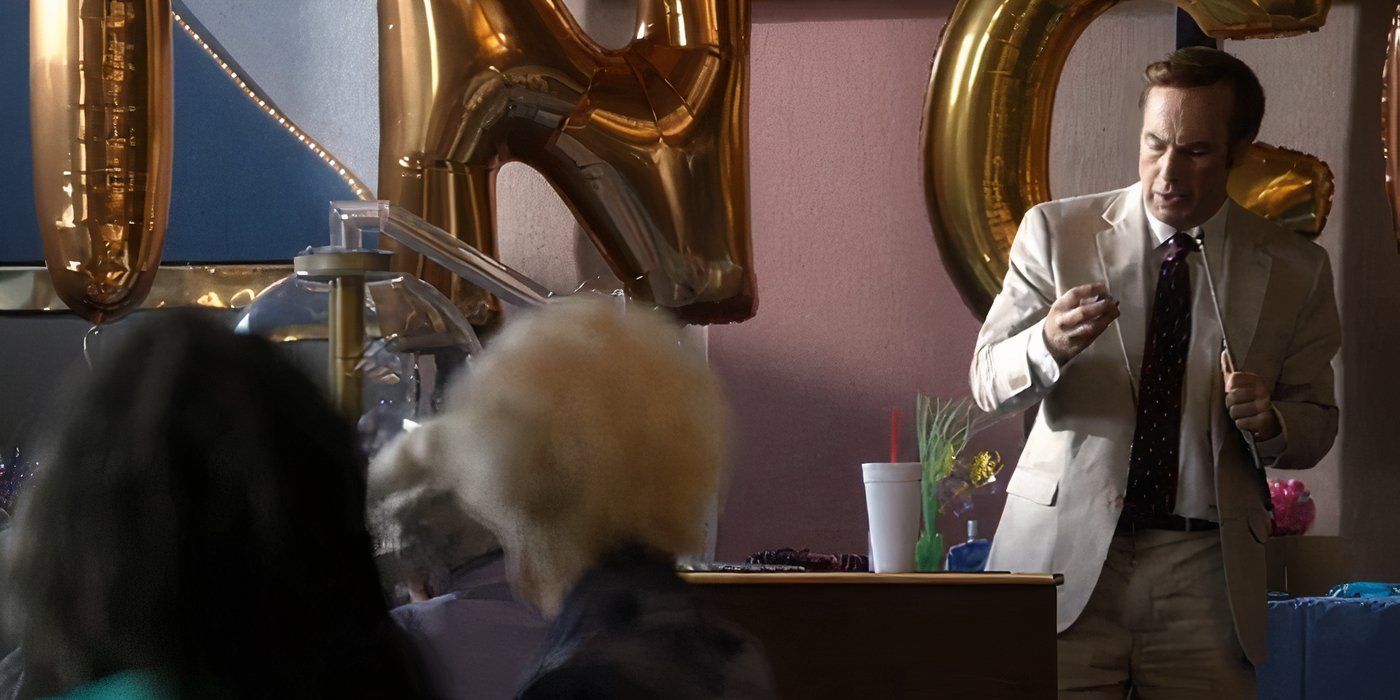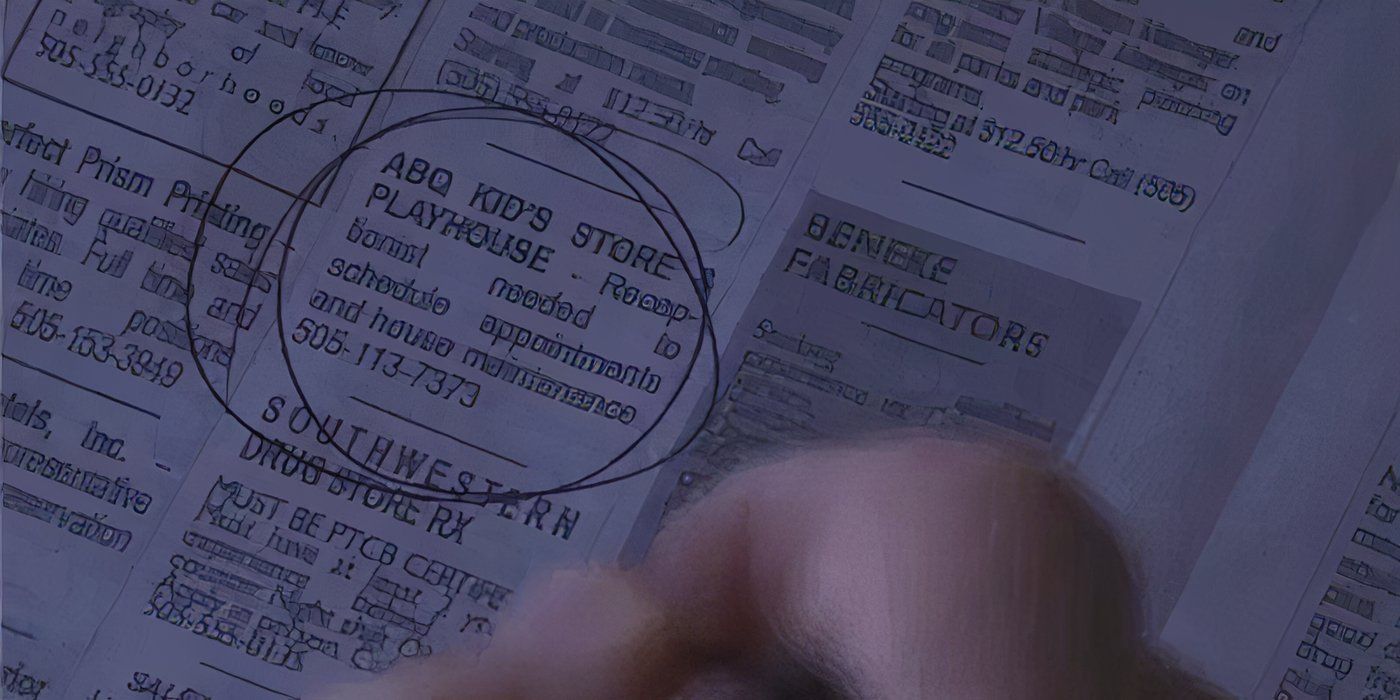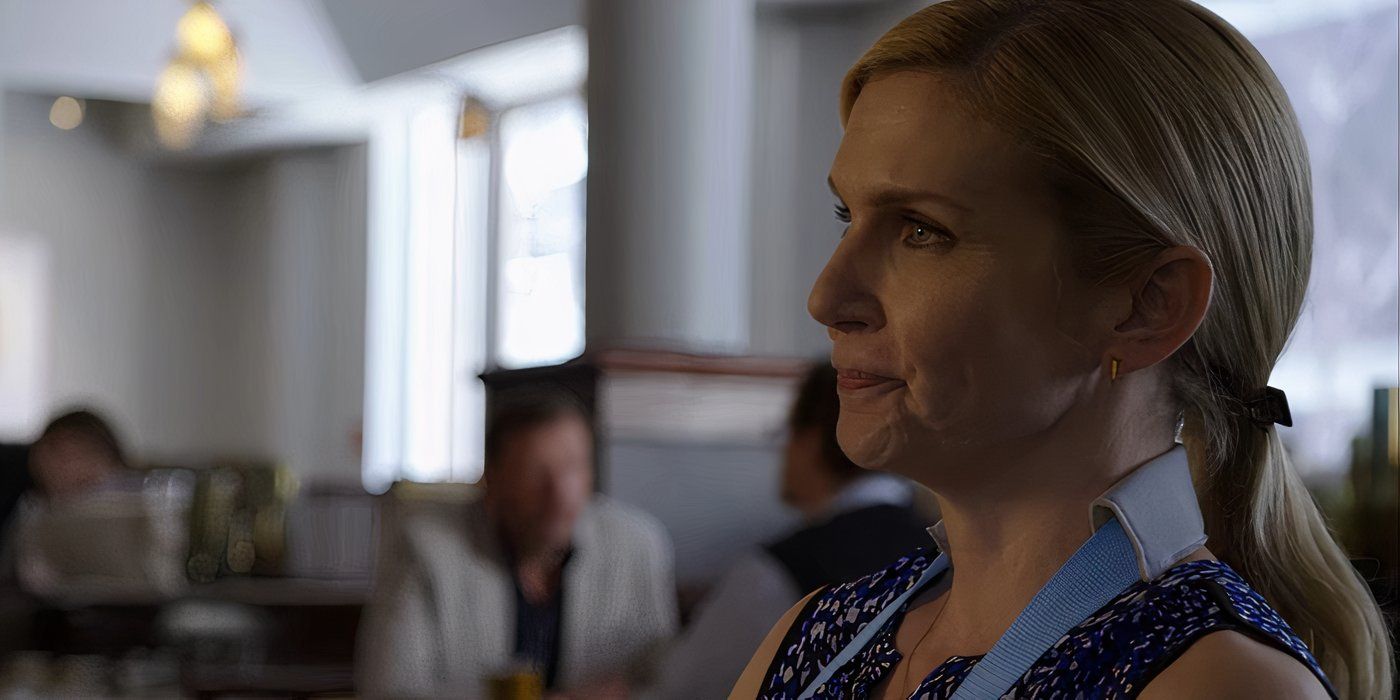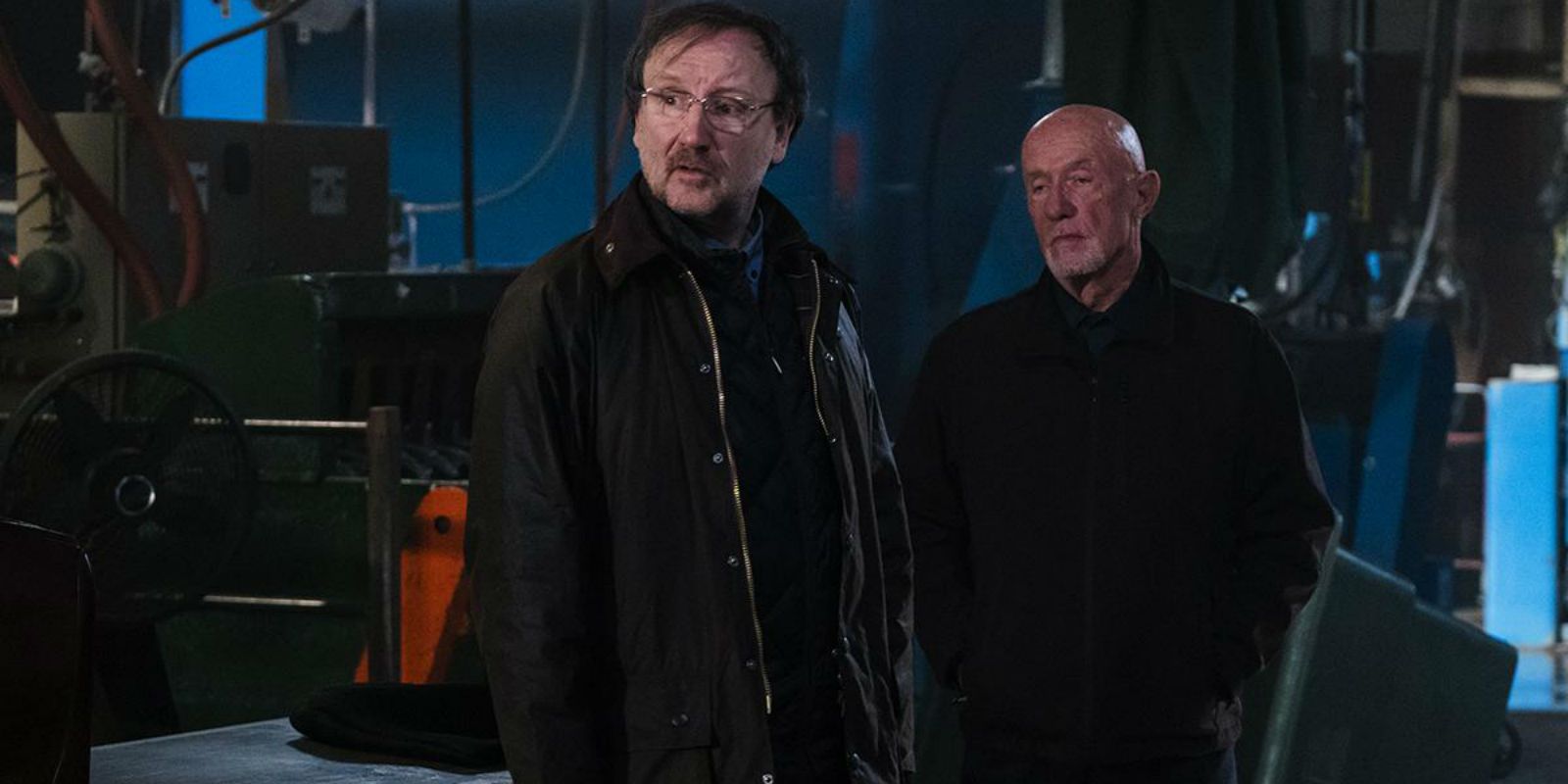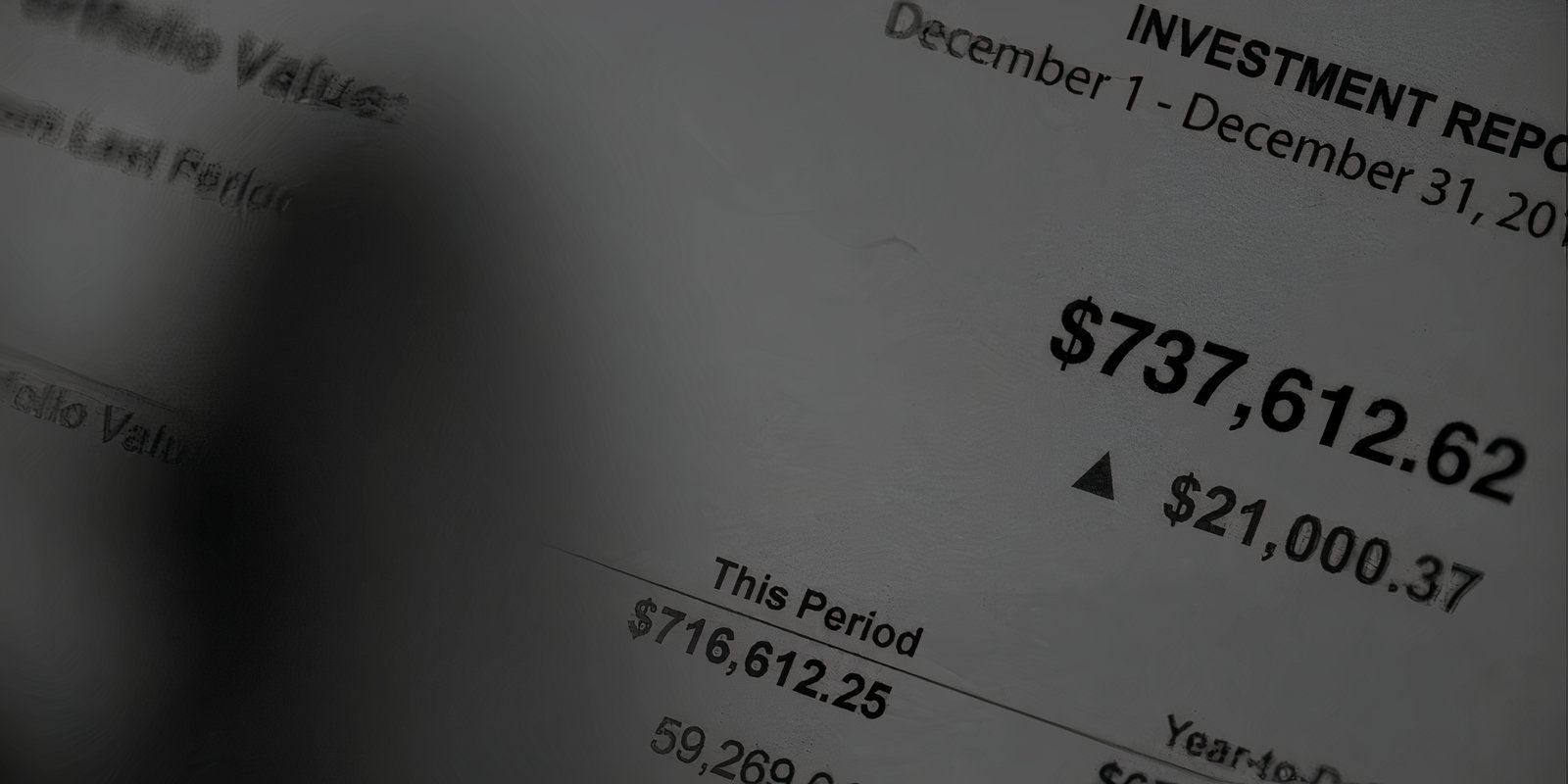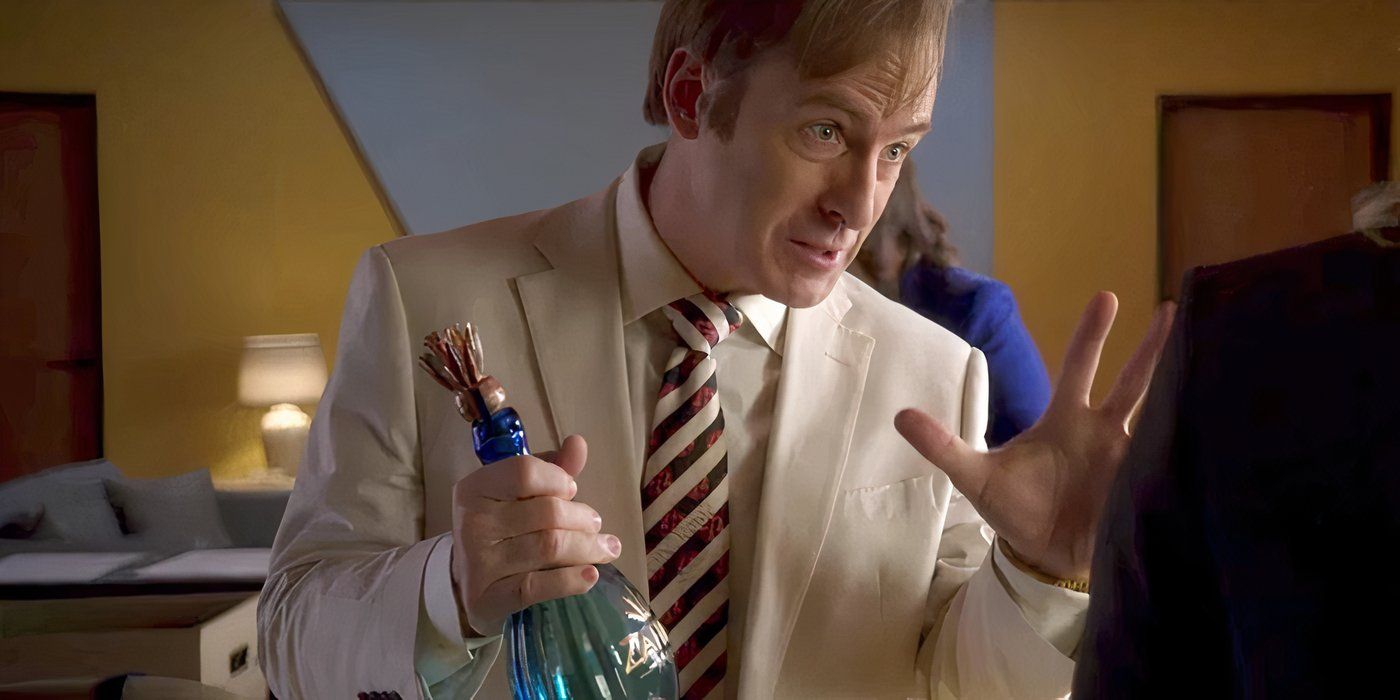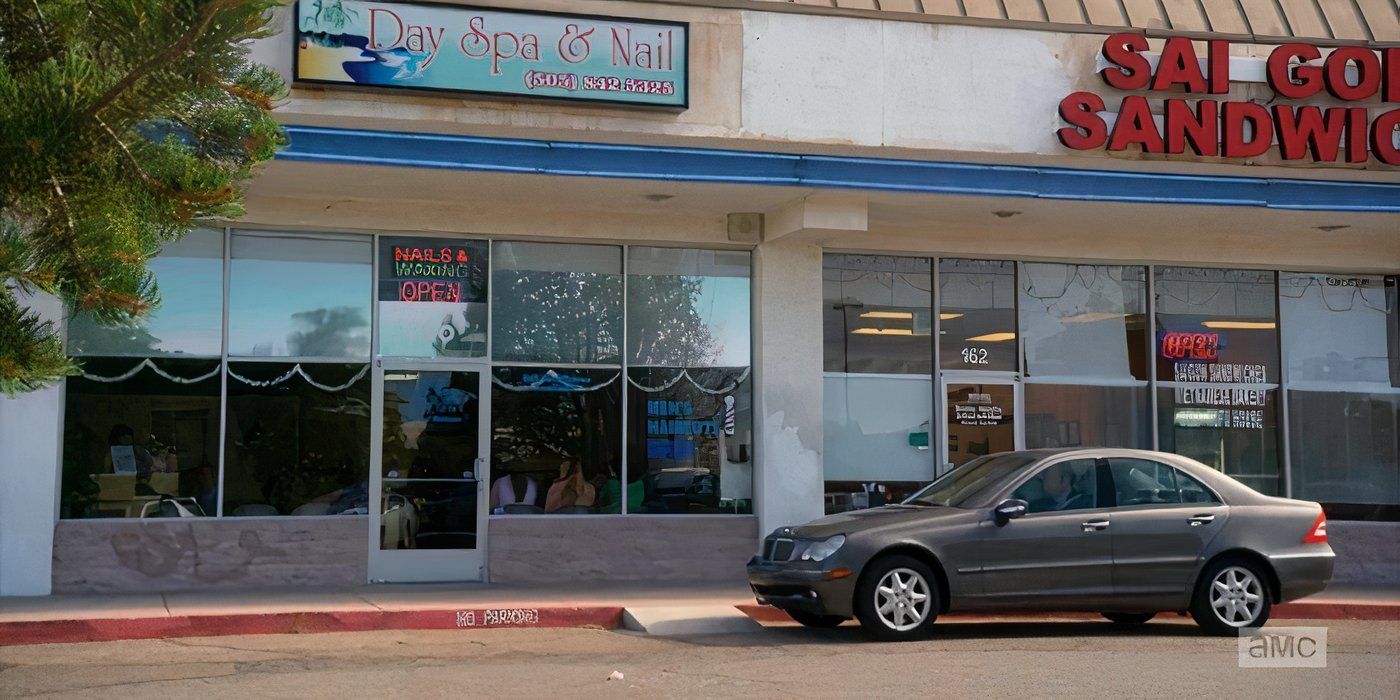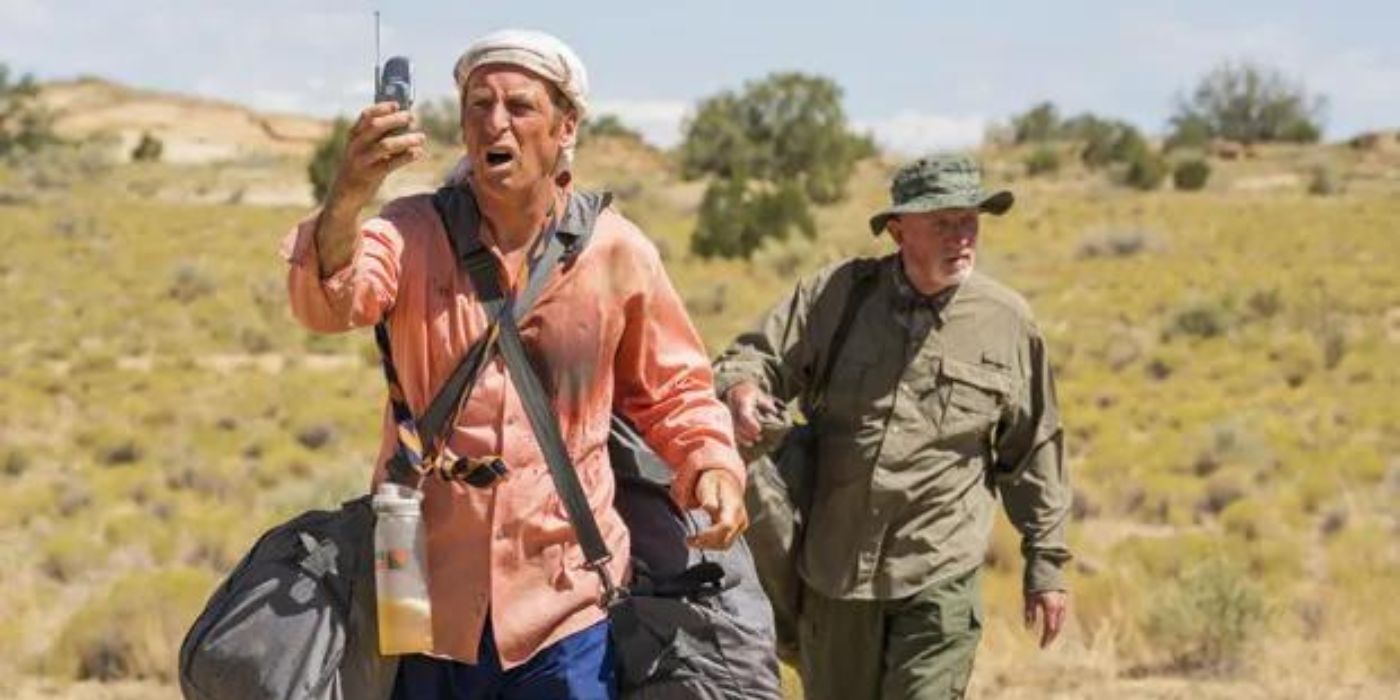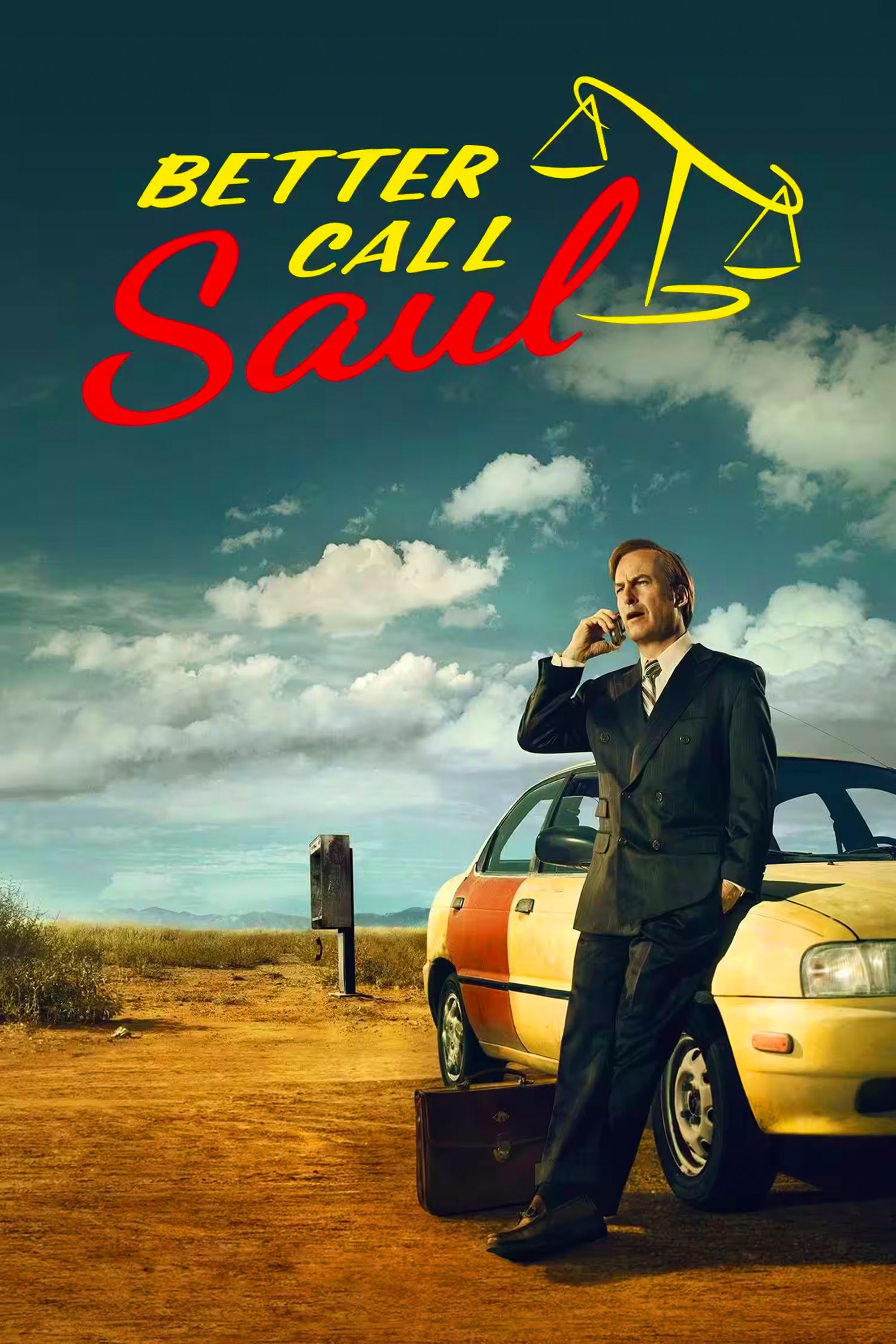Summary
- Better Call Saul rewarded attentive viewers with countless hidden details, allusions, and symbols to spot in every episode.
- Small Easter eggs like references to Breaking Bad and Beneke Fabricators immersed viewers in the show's intricate universe.
- The series utilized color symbolism, like in Breaking Bad, to reflect the characters' moral journeys and ethical standing.
Better Call Saul was a television series categorized by incredible attention to detail and was chock-full of countless allusions, callbacks, and symbols for observant viewers to spot. Much like Breaking Bad before it, this prequel series rewarded audiences who paid close attention, and every episode was full of numerous moments that could be analyzed, endlessly pulled apart, and discussed for their insightful relevance to the overall narrative. This show begged to be rewatched because, with each subsequent viewing of Better Call Saul, new details revealed themselves.
The obvious consistent details that viewers looked out for when watching Better Call Saul were Easter eggs to Breaking Bad and El Camino, but these only scratched the surface of the small details that audiences may have missed. Better Call Saul’s creators, Vince Gilligan and Peter Gould, not only ensured that this show could live up to the legacy of Breaking Bad, but in many ways, its commitment to detail even exceeded the previous show. With consistently high quality throughout its six-season run, there were so many small details that viewers might have missed when watching Better Call Saul.
8 B Is For Belize
Season 1, Episode 10, “"Marco"
From the very first season of Better Call Saul, the series was throwing in small Easter eggs and references to Breaking Bad for eagle-eyed viewers to spot. One particularly satisfying reference came in the first season finale, when Jimmy McGill hosted a bingo game and continually drew the letter B. Jimmy went through some classic examples when he said B was for battleships and Bourbon before stating: “B is for Belize. Beautiful place, so I’ve heard, I would love to go there, but let’s face it, that’s never going to happen.”
For those not paying close attention, this may seem inconsequential, but Belize has a much deeper meaning in the world of Better Call Saul, as it was Saul’s hidden code for killing unwanted adversaries in Breaking Bad. When Saul talked to Walter White about sending Hank “on a trip to Belize” in the Season 5 episode “Buried,” he wasn’t talking about him going on a sunny vacation. Subtle callbacks like this were why Better Call Saul was one of the best prequels ever produced.
7 Beneke Fabricators
Season 4, Episode 1, “Smoke”
There were so many blink-and-miss-it moments throughout Better Call Saul that made it a series that just begged to be rewatched, analyzed, and pondered over in the years after its finale aired. One tiny detail that only the most attentive viewer would have spotted came in the fourth season premiere as Jimmy searched through the classified ads in the newspaper. When the camera panned to the paper, the familiar name of Beneke Fabricators could be briefly seen alongside the other ads.
Beneke Fabricators was the company of Ted Beneke, who, although he did not appear in Better Call Saul, had an important role in Breaking Bad. Ted was the former boss of Skyler White, with whom he briefly had an affair. After Ted committed tax fraud, Skyler organized for him to be secretly given over $600,000 of Walt's money, which he blew on a new Mercedes. Little details like the Beneke Fabricators advertisement in Better Call Saul were exciting Easter eggs that made the show's universe feel real and lived in.
6 “I Like It. I’m Good At It.”
Season 4, Episode 6, “Piñata”
Better Call Saul was full of visual callbacks and references that made the show fascinating. One highly subtle moment came in Season 4 when Kim told Jimmy about her new position doing pro bono work for the public defender’s office. While Jimmy looked at Kim dumbfounded and did not understand why she would be doing something that appeared to hold such little gain for her, she simply replied, “I like it, I’m good at it, and I’m helping people.”
Hearing this in Better Call Saul took viewers back to the finale of Breaking Bad, as Walter White took responsibility for his terrible acts and no longer hid behind his reasoning that he did everything for his family. When Walt told Skyler he did it for himself because “I liked it” and “I was good at it,” it was one of the most cathartic moments in all of Breaking Bad. As Kim mimicked these same lines but for very different reasons it highlighted Breaking Bad and Better Call Saul’s underlying theme of utilizing potential for good or bad.
5 Werner Ziegler & Walter White
Season 4, Episode 5, “Quite a Ride"
Werner Ziegler was the German engineer hired by Mike Ehrmantraut to oversee the construction of Gustavo Fring's Superlab in Better Call Saul and was first seen in the Season 4 episode “Quite a Ride.” Werner was a fascinating character when it came to hidden details that Better Call Saul viewers may have missed, especially when he was compared to the Breaking Bad protagonist, Walter White. In a way, Werner and Walter can be seen as juxtapositions of one another whose stories mimicked and differentiated from each other in significant ways.
Like Walter, Werner was an underappreciated genius who found himself working with Mike and Gus only to become a liability who needed to be disposed of. While Walter retaliated and eventually overcame Gus’s plans to have him killed, Werner accepted his fate and was ultimately executed by Mike. Werner also shared a name with the German scientist Werner Heisenberg, whose namesake became Walter’s criminal identity, further highlighting the interesting and often unnoticed parallels between the two characters.
4 Gene’s Robbery
Season 6, Episode 12, “Waterworks”
After Jimmy McGill was forced to give up his life as the criminal lawyer Saul Goodman and move to Omaha under the new guise of Gene Takovic, he could not help but go back to his old ways and continue pulling off yet another con. In Gene’s robbery in Season 6, Better Call Saul pulled off one of its most ingenious hidden details that only the most observant viewer would have spotted. This was when Gene took pictures of his victim’s financial portfolio, which amounted to $737,612.62.
This would have seemed like a completely random number to the average viewer, but it was actually the same amount of money that Walter White wanted to leave behind for his family. Early in Breaking Bad, Walter calculated this figure and planned to get out of the meth business once he had reached it so he could ensure his family’s welfare after he died. This was not a coincidence, as Gene’s robbery symbolized Jimmy once again going down the same destructive path that Walter did and that, by going back to his life of crime, Jimmy was no better than Walt.
3 Zafiro Añejo Tequila
Throughout Better Call Saul
With the A1A Car Wash, Schraderbräu, and Los Pollos Hermanos, the Breaking Bad universe was no stranger to fictional businesses and brands, and Better Call Saul continued this tradition with the inclusion of Zafiro Añejo tequila. This alcoholic spirit first appeared in Breaking Bad when Gus Fring gifted a poisoned bottle of it to Don Eladio Vuente and the cartel, which he used to kill them all. While this was the drink's only appearance in Breaking Bad, it was spotted several times throughout Better Call Saul.
In the second season, Jimmy and Kim conned the stockbroker Ken into buying them shots of Zafiro Añejo. Jimmy gifted Kim a bottle in the third season to celebrate the Sandpiper case's imminent settlement. In Season 4, Kim and Jimmy drink a bottle after Chuck’s suicide. Finally, in the sixth season, Jimmy almost bought a bottle to celebrate his and Kim's plan to ruin Howard. With so many appearances, Zafiro Añejo was a significant drink in the relationship between Jimmy and Kim, as they used the tequila to signify times of celebration and commiseration.
2 Juan Tabo Blvd, New Mexico
Throughout Better Call Saul
There were very few coincidences in Better Call Saul, as the writing was so impeccable that even the tiniest detail was often related to other moments within the Breaking Bad universe. One interesting detail that continually popped up throughout Better Call Saul was Juan Tabo Blvd, an Albuquerque, New Mexico street that featured its fair share of callbacks and allusions. The first was that this was the street that housed Gale Boetticher and where he met his untimely end after being shot by Jesse Pinkman in Breaking Bad.
However, Juan Tabo was also the location of the Dry Spa and Nail Salon, whose utility room Jimmy McGill used as an office during the earliest seasons of Better Call Saul. As a real street in Albuquerque, it’s no surprise that it popped up numerous times throughout Breaking Bad and Better Call Saul. Although it’s interesting to think that while Jimmy McGill was slowly building up his legal practice, Gale was just down the street, unaware of the fate that would befall him just a few short years later.
1 Colors And Symbolism
Throughout Better Call Saul
One thing that set Better Call Saul apart from so many other television series was its incredible use of color, which symbolized the characters' moral decline as the series progressed. Much like in Breaking Bad, color was a central indicator of the ethical standing of its characters and the complex psychology behind their actions and decisions. The flash-forward scenes with Gene entirely removed color to represent how much Jimmy had lost from his unfortunate criminal relationship with Walter White.
In Better Call Saul, color was used as a storytelling tool throughout, and if audiences were ever in doubt about how they should feel about the characters, all they had to do was glance at their outfits, and it would reveal a world of information. Those on the legal side often wore navy, blue, and green, while criminals were usually seen in red and orange. A contrast between cold and warm hues like these was seen throughout Better Call Saul, with Jimmy often stuck in the middle, unsure which side of that divide he wanted to land on.


